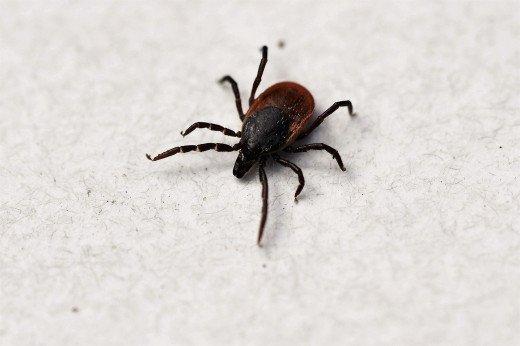Introduction
TBE (Tick-borne encephalitis) is a viral infectious disease that mainly affects the central nervous system. Usually, this disease causes encephalitis, meningitis, and meningoencephalitis. It also causes some long-lasting or permanent neuropsychiatric consequences seen in around 10-20% of the infected patients.
Some of the most affected countries by this disease are in Europe and its effect can be seen in countries like Switzerland and some of its surrounding regions. This disease has become a challenging health issue in that area. During the last three decades, the number of victims of this disease has increased by 400% in that region.
The tick-borne encephalitis virus infects humans and various types of animals like ruminants, rodents, birds, and carnivores. It is a disease that can also spread from animals to humans. According to some research, it is found that dogs are one of the main carriers of this disease.
We are writing this article to make you aware of this viral infectious disease that affects the human central nervous system. This disease is spreading very quickly in many parts of Europe and Asia. This infection can be transmitted through the bite of infected ticks.
At Ubuy we care about your health. That's why we are providing you information about the causes, symptoms, and treatment for this disease.
What are the Geographical Distribution Areas of this Disease?
The areas in which this disease usually tends to occur are within the endemic areas of the countries. One of the highest numbers of incidence of this disease is reported from the foci in the Baltic states of the Russian Federation.
There are other states and countries also from where the report of this disease is also heard like Austria, Albania, Bosnia, Belarus, China, Denmark, Finland, Germany, Italy, Hungary, Mongolia, Greece, Poland, Norway, Romania, the Republic of Korea, Serbia, Sweden, Ukraine, Switzerland, and Slovakia.
Causes of Tick-Borne Encephalitis (TBA)
The tick-borne encephalitis virus (TBE) is a member of the genus flavivirus that comes in the family of Flaviviridae. It comes in three virus subtypes those are European or Western tick-borne encephalitis virus which is transmitted from Ixodes ricinus, Siberian tick-borne encephalitis virus that transmitted by I. persulcatus and Far eastern tick-borne encephalitis which is also known as Russian spring-summer encephalitis virus that is also spread by I. persulcatus.
In some regions of Russia and Europe, there are around 5000-7000 reports of human cases of this disease, annually.
Usually, the main reason for TBE is by the bite of several species of infected woodland ticks that includes Ixodes scapularis, I. ricinus and mostly rarely through the non pasteurized milk of infected cows. This infection also gets passed on by consuming raw milk or milk cheese.
Signs and Symptoms of TBE
Usually, the incubation time of TBE is around 7-14 days. In some cases, it takes a shorter time compared to others. When the infection occurs through milk-borne exposure, it takes a shorter time.
There are certain TBE that causes severe effects particularly on adults and children, for example, the Far Eastern and European TBE acts more severely in adults than in children.
According to some research, around two-thirds of patients who are infected with the European TBE virus in the early phase, experience symptoms like fever, malaise, anorexia, muscle aches, vomiting, headache, and nausea.
But after 8 days when the second phase occurs in around 20-30% patients, they experience a clinical illness that includes the central nervous system which consists of symptoms like meningitis, encephalitis (confusion, sensory disturbances, motor abnormalities like paralysis) or meningoencephalitis.
There is a report found that around 10-20% of patients have neuropsychiatric sequelae after a long recovery period.
Different types of TBE show different types of symptoms. In the case of European or western TBE, there is biphasic symptomatology that means a first fever, then neurological disorders occur frequently. The symptoms from the infection from Far eastern TBE are more severe and fatal and the occurrence of chronic encephalitis in children is due to the Siberian subtype.
Treatment and Prevention of Tick-Borne Encephalitis (TBE)
According to research done for TBE treatment, it is found that there is no specific drug therapy for curing the disease of TBE.
People who have TBE go through symptoms like meningitis or encephalitis and that requires the need for hospitalization and supportive care. There are some anti-inflammatory drugs that can be considered for specific circumstances for symptomatic relief like corticosteroids.
There is no specific prevention included for preventing this disease from happening. But the use of prophylaxis in the form of vaccination is one option.
TBE infection can be avoided with the help of insect repellents and protective clothing that prevents ticks. Its vaccines are available in some disease-endemic areas.
Conclusion
In this article, we have discussed certain details about the disease of Tick-Borne Encephalitis (TBE). This disease is spreading its wings all over the world. Many countries are affected by this disease. We have also provided you with information about the countries that are affected by this disease.
The tick-borne encephalitis is a virus that mainly infects the central nervous system. In some cases, patients are left with some permanent neurological problems even after treatments.
Ubuy always wishes the best for everyone. That's why we are providing you with some detailed information about this disease. Reading books like “Critical care for infectious diseases” will help you to take necessary actions, become more aware of infectious diseases and stay safe.

